COL TEMPO, 1956–2024 by Guido Guidi [ENGLISH EDITION]
イタリア・チェゼーナ出身のフォトグラファー、グイド・グイディ(Guido Guidi)の作品集。2024年12月から2025年4月にかけてローマの「イタリア国立21世紀美術館 / マキシ(MAXXI)」で開催されている展覧会に伴い刊行された。同展は、作者のキャリアを網羅する待望の回顧展となる。作者が得意とする、啓蒙的かつ鑑賞者に連想を促すようなスタイルを発揮しながら、シークエンスを作者自ら組み立てている。
本書は作者が15歳のときに、イタリア・エミリア=ロマーニャ州の都市チェゼーナに建つ自宅周辺の田園地帯で撮影した初期の作品から始まる。それに続き、約70年にわたる活動を追い、現代写真界で最も重要な人物のひとりである作者の進化を辿りながら、その幅広いスタイルや表現形式、アプローチを網羅する。アメリカ、ロシア、トルコ、ポルトガルでの旅や、カルロ・スカルパ(Carlo Scarpa)、ミース・ファン・デル・ローエ(Mies van der Rohe)、ル・コルビュジエ(Le Corbusier)といった建築家の作品の研究も見つけることができる。やがて自身が生まれ現在も暮らして制作を続けているささやかな農村風景に立ち戻り、その中で現代の巨匠と称えられるに及んだ啓示的な視覚言語を発展させている様子が見られる。
本書は、作者の最も知られている作品群やシリーズとあわせて、未公開の初期作品や新作、さらには絵画、著作も収録しており、初期ルネサンス期のフレスコ画、ミニマリズム、ポップ・アート、記号論による影響が作者の作品群をより重層的かつ豊かにしていることに気付かされる。美術史家であり評論家、キュレーターであるフリッツ・ヒールスベルフ(Frits Gierstberg)、美術史家のフロリアン・エブナー(Florian Ebner)、写真表現の専門家であるアレッサンドロ・ココ(Alessandro Coco)、本展覧会キュレーターのシモーナ・アントナッチ(Simona Antonacci)、ピッポ・チョッラ(Pippo Ciorra)、アントネッロ・フロンジア(Antonello Frongia)によるエッセイも収録。本書は同美術館との共同刊行となる。
Coinciding with a major retrospective exhibition at MAXXI, Rome, Col tempo, 1956–2024 provides a complete and long-awaited retrospective of the career of Guido Guidi, sequenced by the artist himself in his typically illuminating, associative style. The book begins with some of the earliest photographs Guidi made, aged fifteen, in the countryside around his home in Cesena in the Italian region of Romagna. The sequence that follows, covering almost seventy years, encompasses a wide range of styles, forms, and approaches as it traces the evolution of one of the most important voices in contemporary photography. It includes journeys to the USA, Russia, Turkey, and Portugal, and studies of the works of architects including Carlo Scarpa, Mies van der Rohe, and Le Corbusier. Consistently, though, it returns to the modest agricultural landscapes where Guidi was born and still lives and works today, among which he has developed the revelatory visual language for which he is celebrated as a modern master.
Including many of Guidi’s most famous works and series alongside unseen early and new works, paintings, and writings, this book reveals the influences of Early Renaissance frescoes, minimalism, Pop art, and semiotics on his rich and layered oeuvre. It is completed by a suite of critical essays by Frits Gierstberg, Florian Ebner, Alessandro Coco, and exhibition curators Simona Antonacci, Pippo Ciorra, and Antonello Frongia.
Co-published with MAXXI, Rome.
![COL TEMPO, 1956–2024 by Guido Guidi [ENGLISH EDITION]](http://twelve-books.com/cdn/shop/files/M_1100dd94-3782-4c0a-a9c1-f0b9af8dc9af.png?v=1737701304)
![COL TEMPO, 1956–2024 by Guido Guidi [ENGLISH EDITION]](http://twelve-books.com/cdn/shop/files/1col_tempo.png?v=1737701304)
![COL TEMPO, 1956–2024 by Guido Guidi [ENGLISH EDITION]](http://twelve-books.com/cdn/shop/files/2col_tempo.png?v=1737701304)
![COL TEMPO, 1956–2024 by Guido Guidi [ENGLISH EDITION]](http://twelve-books.com/cdn/shop/files/3col_tempo.png?v=1737701304)
![COL TEMPO, 1956–2024 by Guido Guidi [ENGLISH EDITION]](http://twelve-books.com/cdn/shop/files/4col_tempo.png?v=1737701304)
![COL TEMPO, 1956–2024 by Guido Guidi [ENGLISH EDITION]](http://twelve-books.com/cdn/shop/files/5col_tempo.png?v=1737701304)
![COL TEMPO, 1956–2024 by Guido Guidi [ENGLISH EDITION]](http://twelve-books.com/cdn/shop/files/6col_tempo.png?v=1737701304)
![COL TEMPO, 1956–2024 by Guido Guidi [ENGLISH EDITION]](http://twelve-books.com/cdn/shop/files/7col_tempo.png?v=1737701304)
![COL TEMPO, 1956–2024 by Guido Guidi [ENGLISH EDITION]](http://twelve-books.com/cdn/shop/files/8col_tempo.png?v=1737701304)
![COL TEMPO, 1956–2024 by Guido Guidi [ENGLISH EDITION]](http://twelve-books.com/cdn/shop/files/9col_tempo.png?v=1737701304)
![COL TEMPO, 1956–2024 by Guido Guidi [ENGLISH EDITION]](http://twelve-books.com/cdn/shop/files/10col_tempo.png?v=1737701304)
![COL TEMPO, 1956–2024 by Guido Guidi [ENGLISH EDITION]](http://twelve-books.com/cdn/shop/files/11col_tempo.png?v=1737701304)
![COL TEMPO, 1956–2024 by Guido Guidi [ENGLISH EDITION]](http://twelve-books.com/cdn/shop/files/12col_tempo.png?v=1737701304)
![COL TEMPO, 1956–2024 by Guido Guidi [ENGLISH EDITION]](http://twelve-books.com/cdn/shop/files/13col_tempo.png?v=1737701304)
![COL TEMPO, 1956–2024 by Guido Guidi [ENGLISH EDITION]](http://twelve-books.com/cdn/shop/files/14col_tempo.png?v=1737701304)
![COL TEMPO, 1956–2024 by Guido Guidi [ENGLISH EDITION]](http://twelve-books.com/cdn/shop/files/15col_tempo.png?v=1737701304)
![COL TEMPO, 1956–2024 by Guido Guidi [ENGLISH EDITION]](http://twelve-books.com/cdn/shop/files/16col_tempo.png?v=1737701304)
![COL TEMPO, 1956–2024 by Guido Guidi [ENGLISH EDITION]](http://twelve-books.com/cdn/shop/files/17col_tempo.png?v=1737701304)
![COL TEMPO, 1956–2024 by Guido Guidi [ENGLISH EDITION]](http://twelve-books.com/cdn/shop/files/18col_tempo.png?v=1737701304)
![COL TEMPO, 1956–2024 by Guido Guidi [ENGLISH EDITION]](http://twelve-books.com/cdn/shop/files/19col_tempo.png?v=1737701304)
![COL TEMPO, 1956–2024 by Guido Guidi [ENGLISH EDITION]](http://twelve-books.com/cdn/shop/files/20col_tempo.png?v=1737701304)
![COL TEMPO, 1956–2024 by Guido Guidi [ENGLISH EDITION]](http://twelve-books.com/cdn/shop/files/21col_tempo.png?v=1737701304)
![COL TEMPO, 1956–2024 by Guido Guidi [ENGLISH EDITION]](http://twelve-books.com/cdn/shop/files/22col_tempo.png?v=1737701304)
![COL TEMPO, 1956–2024 by Guido Guidi [ENGLISH EDITION]](http://twelve-books.com/cdn/shop/files/23col_tempo.png?v=1737701304)
![COL TEMPO, 1956–2024 by Guido Guidi [ENGLISH EDITION]](http://twelve-books.com/cdn/shop/files/24col_tempo.png?v=1737701304)
![COL TEMPO, 1956–2024 by Guido Guidi [ENGLISH EDITION]](http://twelve-books.com/cdn/shop/files/25col_tempo.png?v=1737701304)
![COL TEMPO, 1956–2024 by Guido Guidi [ENGLISH EDITION]](http://twelve-books.com/cdn/shop/files/26col_tempo.png?v=1737701304)
![COL TEMPO, 1956–2024 by Guido Guidi [ENGLISH EDITION]](http://twelve-books.com/cdn/shop/files/27col_tempo.png?v=1737701304)
![COL TEMPO, 1956–2024 by Guido Guidi [ENGLISH EDITION]](http://twelve-books.com/cdn/shop/files/28col_tempo.png?v=1737701304)
![COL TEMPO, 1956–2024 by Guido Guidi [ENGLISH EDITION]](http://twelve-books.com/cdn/shop/files/29col_tempo.png?v=1737701304)
![COL TEMPO, 1956–2024 by Guido Guidi [ENGLISH EDITION]](http://twelve-books.com/cdn/shop/files/30col_tempo.png?v=1737701304)
![COL TEMPO, 1956–2024 by Guido Guidi [ENGLISH EDITION]](http://twelve-books.com/cdn/shop/files/31col_tempo.png?v=1737701304)
![COL TEMPO, 1956–2024 by Guido Guidi [ENGLISH EDITION]](http://twelve-books.com/cdn/shop/files/32col_tempo.png?v=1737701304)
![COL TEMPO, 1956–2024 by Guido Guidi [ENGLISH EDITION]](http://twelve-books.com/cdn/shop/files/33col_tempo.png?v=1737701304)
![COL TEMPO, 1956–2024 by Guido Guidi [ENGLISH EDITION]](http://twelve-books.com/cdn/shop/files/34col_tempo.png?v=1737701304)
![COL TEMPO, 1956–2024 by Guido Guidi [ENGLISH EDITION]](http://twelve-books.com/cdn/shop/files/35col_tempo.png?v=1737701304)
![COL TEMPO, 1956–2024 by Guido Guidi [ENGLISH EDITION]](http://twelve-books.com/cdn/shop/files/36col_tempo.png?v=1737701304)
![COL TEMPO, 1956–2024 by Guido Guidi [ENGLISH EDITION]](http://twelve-books.com/cdn/shop/files/37col_tempo.png?v=1737701304)
![COL TEMPO, 1956–2024 by Guido Guidi [ENGLISH EDITION]](http://twelve-books.com/cdn/shop/files/38col_tempo.png?v=1737701304)
![COL TEMPO, 1956–2024 by Guido Guidi [ENGLISH EDITION]](http://twelve-books.com/cdn/shop/files/49col_tempo.png?v=1737701304)
![COL TEMPO, 1956–2024 by Guido Guidi [ENGLISH EDITION]](http://twelve-books.com/cdn/shop/files/50col_tempo.png?v=1737701304)
![COL TEMPO, 1956–2024 by Guido Guidi [ENGLISH EDITION]](http://twelve-books.com/cdn/shop/files/41col_tempo.png?v=1737701304)
![COL TEMPO, 1956–2024 by Guido Guidi [ENGLISH EDITION]](http://twelve-books.com/cdn/shop/files/42col_tempo.png?v=1737701304)
![COL TEMPO, 1956–2024 by Guido Guidi [ENGLISH EDITION]](http://twelve-books.com/cdn/shop/files/43col_tempo.png?v=1737701304)
![COL TEMPO, 1956–2024 by Guido Guidi [ENGLISH EDITION]](http://twelve-books.com/cdn/shop/files/44col_tempo.png?v=1737701304)
![COL TEMPO, 1956–2024 by Guido Guidi [ENGLISH EDITION]](http://twelve-books.com/cdn/shop/files/45col_tempo.png?v=1737701304)
![COL TEMPO, 1956–2024 by Guido Guidi [ENGLISH EDITION]](http://twelve-books.com/cdn/shop/files/46col_tempo.png?v=1737701304)
![COL TEMPO, 1956–2024 by Guido Guidi [ENGLISH EDITION]](http://twelve-books.com/cdn/shop/files/48col_tempo.png?v=1737701304)
![COL TEMPO, 1956–2024 by Guido Guidi [ENGLISH EDITION]](http://twelve-books.com/cdn/shop/files/39col_tempo.png?v=1737701304)
![COL TEMPO, 1956–2024 by Guido Guidi [ENGLISH EDITION]](http://twelve-books.com/cdn/shop/files/40col_tempo.png?v=1737701304)
![COL TEMPO, 1956–2024 by Guido Guidi [ENGLISH EDITION]](http://twelve-books.com/cdn/shop/files/54col_tempo.png?v=1737701304)
![COL TEMPO, 1956–2024 by Guido Guidi [ENGLISH EDITION]](http://twelve-books.com/cdn/shop/files/52col_tempo.png?v=1737701304)
![COL TEMPO, 1956–2024 by Guido Guidi [ENGLISH EDITION]](http://twelve-books.com/cdn/shop/files/53col_tempo.png?v=1737701304)
![COL TEMPO, 1956–2024 by Guido Guidi [ENGLISH EDITION]](http://twelve-books.com/cdn/shop/files/51col_tempo.png?v=1737701304)
![COL TEMPO, 1956–2024 by Guido Guidi [ENGLISH EDITION]](http://twelve-books.com/cdn/shop/files/55col_tempo.png?v=1737701304)
![COL TEMPO, 1956–2024 by Guido Guidi [ENGLISH EDITION]](http://twelve-books.com/cdn/shop/files/56col_tempo.png?v=1737701304)
![COL TEMPO, 1956–2024 by Guido Guidi [ENGLISH EDITION]](http://twelve-books.com/cdn/shop/files/57col_tempo.png?v=1737701304)
![COL TEMPO, 1956–2024 by Guido Guidi [SOFTCOVER / ENGLISH EDITION]](http://twelve-books.com/cdn/shop/files/00_21f680bc-b702-4255-ba90-e23ecc0b16bc_large.jpg?v=1745383464)
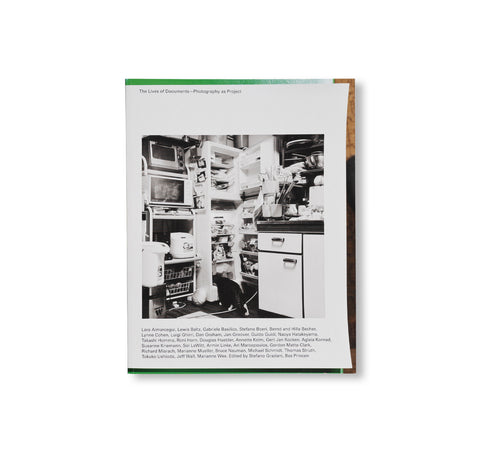
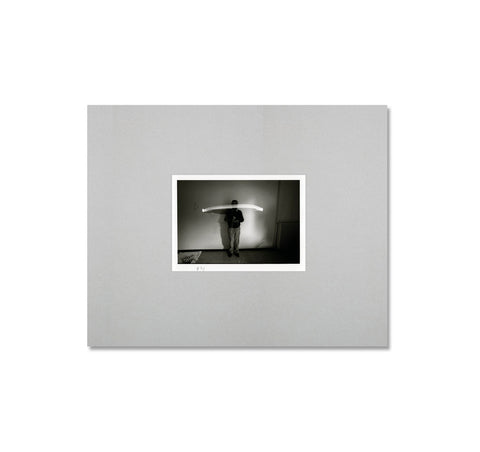
![DI SGUINCIO, 1969–81 by Guido Guidi [SIGNED]](http://twelve-books.com/cdn/shop/products/00_877b39b1-488c-4d76-89dd-77777d9dfbbf_large.jpg?v=1679017656)
![CINQUE VIAGGI (1990-98) by Guido Guidi [SIGNED]](http://twelve-books.com/cdn/shop/products/cinque001_large.jpg?v=1627004950)

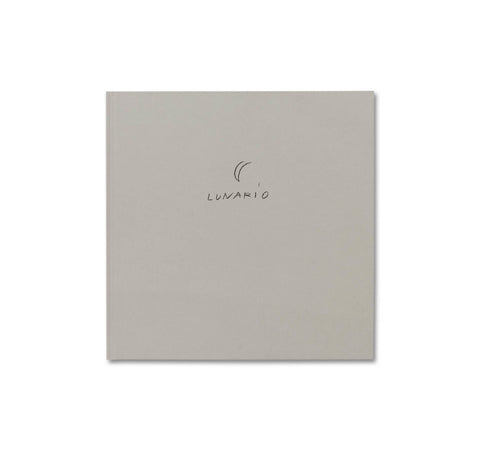

![IN VENETO, 1984-89 by Guido Guidi [SPECIAL EDITION]](http://twelve-books.com/cdn/shop/products/InVeneto1984-89_GG_01_sp_c99cd4ae-7e23-4589-a829-1ac72e2b5f1e_large.jpg?v=1572947059)
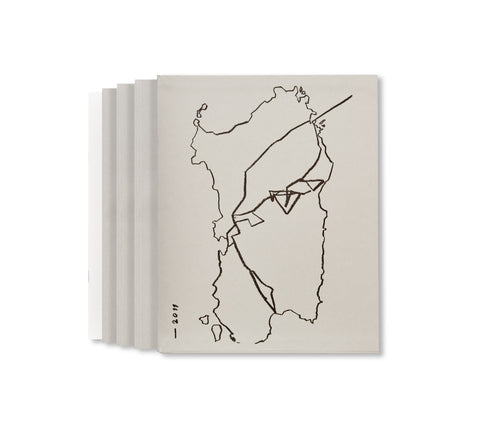
![PER STRADA by Guido Guidi [SIGNED]](http://twelve-books.com/cdn/shop/products/181114_11536-1_large.jpg?v=1571703836)
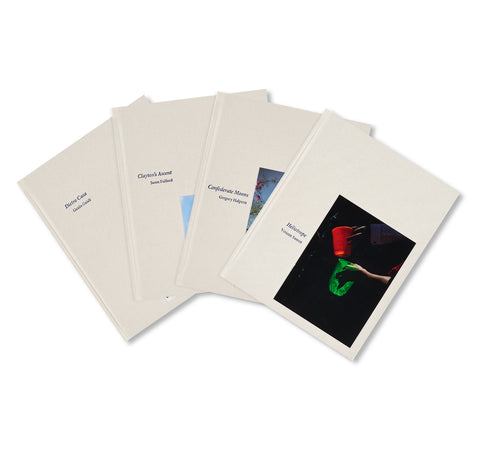

![PREGANZIOL, 1983 by Guido Guidi [SIGNED]](http://twelve-books.com/cdn/shop/products/140407_66233_large.jpg?v=1571703976)